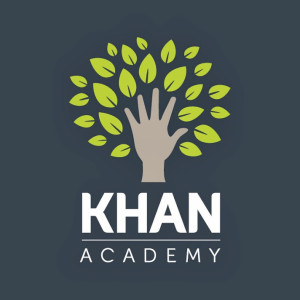Open Education Resources (OER)
i-pel brings standards-aligned Open Education Resources (OER) resources from hundreds of educational content providers to enhance K-12 curriculum content. Offering a quantity and quality of digital media content that is engaging and entertaining, we give every student a chance to experience fascinating people, places, and events. Open Educational Resources include:
The Internet provides unique opportunities for educators to access, use, modify, and share educational materials. Open Educational Resources (OERs), are teaching and learning educational materials which are licensed in ways that they are free and provide permissions for individuals and institutions to reuse, remix, adapt and otherwise customize the materials for their own use. OERs can, and do include full courses, textbooks, streaming videos, exams, software, and any other materials or techniques supporting learning.
The value of OER lies in its potential to reduce the cost and time associated with the design and development of teaching materials. Sharable materials offer opportunities to reduce teacher workloads, because open materials do not need to be recreated from scratch for every reuse. Sharing development costs among many institutions while retaining the right to adapt, modify and brand materials generates tangible benefits from participating in OER. Moreover, OER is a low cost alternative to expand and widen curriculum choice by sharing development and delivery costs in subject areas that typically do not achieve the break-even enrolment threshold.
 The Open Education Resources Foundation (www.hewlett.org/programs/education/open-educational-resources) uses Creative Commons licenses which are approved by the Free Cultural Works Definition. These licenses provide permissions to reuse and modify educational materials on condition that the original copyright owners are properly attributed. The OER Foundation uses the “Creative Commons Attribute License” or the “Creative Commons Attribution-Share Alike License” for its OER. (Contributors are also the Public Domain declaration for gifting materials to a project.) The legal permission framework of Creative Commons licenses significantly reduces the transaction costs associated with sharing teaching materials for the social good of education.
The Open Education Resources Foundation (www.hewlett.org/programs/education/open-educational-resources) uses Creative Commons licenses which are approved by the Free Cultural Works Definition. These licenses provide permissions to reuse and modify educational materials on condition that the original copyright owners are properly attributed. The OER Foundation uses the “Creative Commons Attribute License” or the “Creative Commons Attribution-Share Alike License” for its OER. (Contributors are also the Public Domain declaration for gifting materials to a project.) The legal permission framework of Creative Commons licenses significantly reduces the transaction costs associated with sharing teaching materials for the social good of education.
The key to realizing the flexibility benefit is open educational resources (OER). According to a report written for the William and Flora Hewlett Foundation, “OER are teaching, learning, and research resources that reside in the public domain or have been released under an intellectual property license that permits their free use or re-purposing by others. [OER] include full courses, course materials, modules, textbooks, streaming videos, tests, software, and any other tools, materials, or techniques used to support access to knowledge.”
While print materials can be OER, where the true value of OER comes into play is the ability for educators to reuse, remix, and generally customize any OER to specific students’ needs. And, as the Hewlett Foundation definition states, OER are free; this is backed up by the Creative Commons, (www.creativecommons.org) an organization that encourages the sharing of creative works such as OER through free legal tools.
The ability of OER to allow the educator to locate just the right resource, lesson, or chapter as they need it is an important consideration with digital content. There may be hundreds of potential resources to use for any given lesson when the teacher has the entire World Wide Web to choose from. To find and select among the vast array of content can be daunting. Therefore a number of  tagging schemes are being developed to simplify how educators search for the specific materials they need. A “tag” is a descriptive term applied to a lesson or “chunk” of content that identifies it by such characteristics as intended grade level (fifth grade), class type (science), and specific topic (atoms and molecules) and standard.
tagging schemes are being developed to simplify how educators search for the specific materials they need. A “tag” is a descriptive term applied to a lesson or “chunk” of content that identifies it by such characteristics as intended grade level (fifth grade), class type (science), and specific topic (atoms and molecules) and standard.
The widespread adoption of CCSS and the possibility that its science counterpart, the “Next Generation Science Standards,” also will be adopted broadly highlights another strong advantage of digital content—greater ability to align and tag content to the CCSS. With the pending launch of CCSS in most states, educators across the country are already applying digital tags to content they use. The tag can accompany the content wherever and whenever it’s used.
Eventually, these tags will allow the search process to become ever more granular, helping teachers identify resources not just for specific grade levels and subjects, but for individual items within a given standard. The Khan Academy (www.khanacademy.org) is a major provider of OER with over 2,000 free educational videos which are available to anyone.
Reviews.com, is and OER website dedicated to conducting data driven and unbiased research about topics that can help make an impact in people’s lives. Centered around the idea that success in the real world begins in the classroom, Massive Open Online Courses (MOOC) is becoming a popular choice for students and professionals to further their education. This is mainly due to availability (internet connection), affordability, and acceptance (earn college credits and degrees). The real challenge is sorting through all the MOOC platforms that are available. Reviews.com has researched, catalogued, and analyzed all the platforms that are readily available.
You can see the entire guide along with some of its features here:


Recent Comments